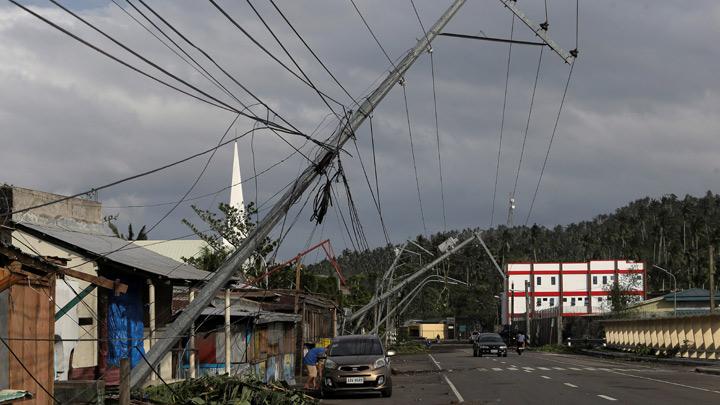How El Nino Could Impact the World's Weather in 2023-2024
Translator
Editor
Laila Afifa
Jumat, 9 Juni 2023 09:07 WIB

TEMPO.CO, London - Countries are racing to prepare for extreme weather later this year as the world tips into an El Nino — a natural climate phenomenon that fuels tropical cyclones in the Pacific and boosts rainfall and flood risk in parts of the globe.
On Thursday, June 8, the U.S. National Oceanic and Atmospheric Administration (NOAA) declared that an El Nino is now underway. The past three years have been dominated by the cooler La Nina pattern.
Scientists say this year looks particularly worrying. The last time a strong El Nino was in full swing, in 2016, the world saw its hottest year on record. Meteorologists expect that this El Nino, coupled with excess warming from climate change, will see the world grapple with record-high temperatures.
Experts are also concerned about what is going on in the ocean. An El Nino means that waters in the Eastern Pacific are warmer than usual. But even before this El Nino began, in May, the average global sea surface temperature was about 0.1C (0.2F) higher than any other on record. That could supercharge extreme weather.
"We're in unprecedented territory," said Michelle L'Heureux, a meteorologist with NOAA's Climate Prediction Center.
Graphics to help explain how El Nino works. Two diagrams showing climate patterns in the Pacific Ocean for neutral and El Nino conditions.
This year's El Nino could lead to global economic losses of $3 trillion, according to a study published last month in the journal Science, shrinking GDP as extreme weather decimates agricultural production, and manufacturing, and helps spread disease.
Governments in vulnerable countries are taking note. Peru has set aside $1.06 billion to deal with El Nino's impacts and climate change, while the Philippines — at risk from cyclones — has formed a special government team to handle the predicted fallout.
Here is how El Nino will unfold and some of the weather we might expect:
What Causes an El Nino?
El Nino is a natural climate pattern borne out of unusually warm waters in the eastern Pacific.
It forms when the trade winds blowing east-to-west along the equatorial Pacific slow down or reverse as air pressure changes, although scientists are not entirely sure what kicks off the cycle.
Because the trade winds affect the sun-warmed surface waters, a weakening causes these warm western Pacific waters to slosh back into the colder central and eastern Pacific basins.
<!--more-->
During the 2015-2016 El Nino — the strongest such event on record — anchovy stocks off the coast of Peru crashed amid this warm water incursion. And nearly a third of the corals on Australia's Great Barrier Reef died. In too-warm waters corals will expel living algae, causing them to calcify and turn white.
This build-up of warm water in the eastern Pacific also transfers heat high into the atmosphere through convection, generating thunderstorms.
"When El Nino moves that warm water, it moves where thunderstorms happen," said NOAA meteorologist Tom DiLiberto. "That's the first atmospheric domino to fall."
How Does El Nino Affect the World's Weather?
This shift in storm activity affects the current of fast-flowing air that moves weather around the world — called the subtropical jet stream — pushing its path southward and straightening it out into a flatter stream that delivers similar weather along the same latitudes.
"If you're changing where the storm highway goes ... you're changing what kind of weather we would expect to see," DiLiberto said.
During El Nino, the southern United States experiences cooler and wetter weather, while parts of the U.S. West and Canada are warmer and drier.
Hurricane activity falters as the storms fail to form in the Atlantic due to changes in the wind, sparing the United States. But tropical cyclones in the Pacific get a boost, with storms often spinning toward vulnerable islands.
Some parts of Central and South America experience heavy rainfall, although the Amazon rainforest tends to suffer from drier conditions.
And Australia endures extreme heat, drought and bushfires.
El Nino could offer a reprieve to the Horn of Africa, which recently suffered five consecutive failed rainy seasons. El Nino brings more rain to the Horn, unlike the triple-dip La Nina which desiccated the region.
Historically, both El Nino and La Nina have occurred about every two to seven years on average, with El Nino lasting 9 to 12 months. La Nina, which takes hold when waters are cooler in the Eastern Pacific, can last one to three years.
Is Climate Change Affecting El Nino?
How climate change might be affecting El Nino is "a very big research question," said DiLiberto. While climate change is doubling down on the impacts from El Nino — layering heat on top of heat, or excess rainfall on top of excess rainfall — it's less clear if climate change is influencing the phenomenon itself.
Scientists are not sure whether climate change will shift the balance between El Ninos and La Nina, making one pattern more or less frequent. If ocean temperatures are rising across the board, it is unlikely the cycle would change, scientists said, as the basic mechanics behind the phenomenon stay the same.
However, if some parts of the ocean are warming faster than others, that could influence how El Nino plays out by amplifying temperature differences.
REUTERS
Editor's Choice: BMKG Warns of Drier Dry Season in Banten Due to El Nino, IOD
Click here to get the latest news updates from Tempo on Google News




















